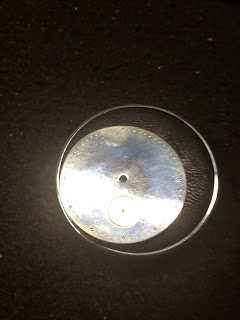Last night I decided to say f it and make some necessary tools to get started on the Hamilton 917 disassembly. First lets start with some tools that I am still awaiting on arriving from various points in the world thanks to ebay as well as Amazon;
Dumont #1
Aven Tweezer set
watch hand puller
***Update 2/13/2012
The person that were selling the Dumont tweezers on ebay turns out are out of stock, and the Aven set on amazon is also out of stock.....poop. I decided to order another alternates I had picked out, Erem SA series #1 (http://www.amazon.com/gp/product/B004UN8IXO/ref=oh_o04_s00_i01_details) and Erop series #3 (http://www.amazon.com/gp/product/B004UN9QPS/ref=oh_o04_s00_i00_details) for comparison. Both tweezers appear in a pic in a later post and between the two, I have decided after suing both extensively that the SA series is not only worth it but a worthy replacement to the Dumont tweezers as well. Great feel on the action and a very fine and even tip on sub $20 tweezers, buy your self a pair of Erem SA series.
***Update 2 2/13/2012
I received one of the two watch hand pullers that I won on ebay for a whole dollar, the shipping cost more and there is a distinct reason why; they work about as well as a dollar object could reasonably expected to. Still waiting on the other watch puller style to see if they are any better.
I still have some other miscellaneous things that I am waiting for but those things are either raw material or gear for maintaining tools like pithwood.
First order of business, watch hand pullers. I decided to make pry bar style watch hand pullers out of small diameter brass rod. I began by hammer the point flat with a hammer and flat punch and than file the flat until it can get under the hour hand on the hamilton. next I had to file further until I could get under the second hand and the watch hands are off.
I resolved my tweezer issue by filing down an existing Heco carbon fiber tip tweezers that I use on electronics. they are older so I didn't feel too terribly bad about filing down such nice tweezers but.....it got the job done.
once the hands were off, I loosen the very small screws around the circumference of the watch movement to remove the dial, which came off with ease. I now see what lies below the dial in person for the first time and I take a moment to appreciate the old school craftsmanship: some one took some time to jewel a surface that no one except watchmakers will ever see, and these days people like myself and the internet.
I carry on with the disassembly and during the process, i came across a couple of SNAFUs;
1) when removing the second bridge (?) piece, do not remove the blued screw next to the case screw as that is what holds the set lever in place, and that set lever is under enough tension to make it go flying
2) the winding gears, the small one to be precise is the one that has a screw with reversed threads so as not to come unscrewed under normal watch operation.
The watch in pieces, I move on to modifying the base plate by removing the lip and also the wrist watch case internal spacer ring to fit around the movement.



I ordered proper tweezers this morning from another source and cancelled my existing order as it has not shipped yet, I had some difficulties with the disassembly with the makeshift tweezers, would rather wait on the correct ones before proceeding.
















































